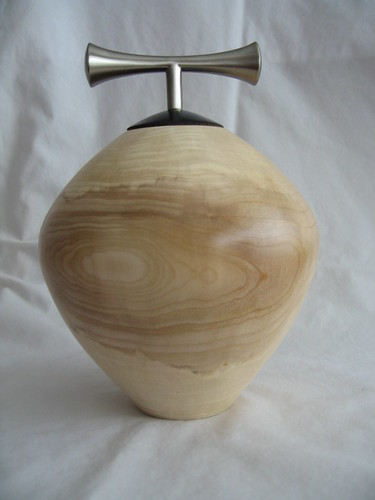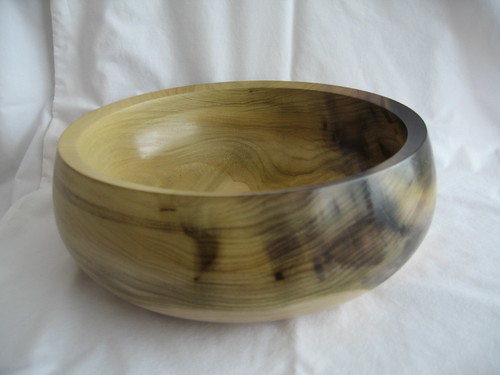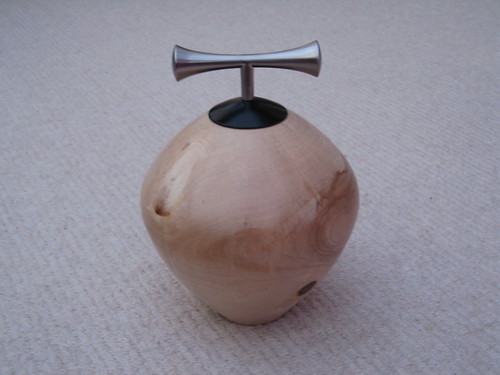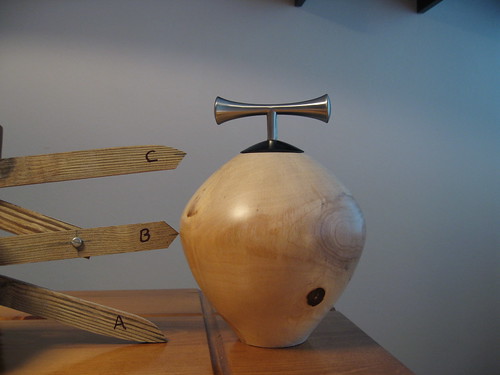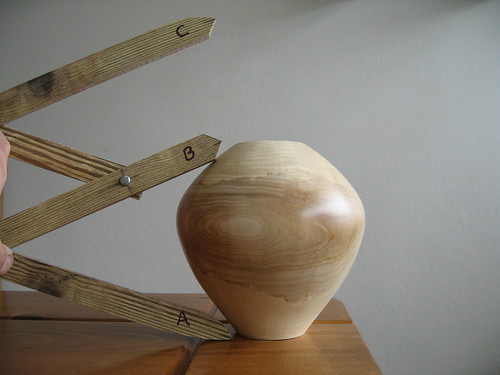Hi Steve
I love the lidded form. I like very much the way you have used a door handle ( why did I not think of that)

, it is a strong statement. I am biased as I like to see different media included in work and stainless steel and wood go fantastically.
In relation to what you say about the base and the golden ratio.
There are several points that may help with this. You are right to have the base at 1/3 the diameter of the form. However you have put the main change of flow halfway up the form which does not conform to the golden ration.
This line conflicts with this rule. This is in itself not an issue but what happens when you bring the line/curve down is that the eye is drawn lower down the form and what it picks up on is the hard line/join of the base of the form with the table.
What also can accentuate the base is the lid being black (again no issue with this, I love it as it goes with the stainless steel)
What the black does do however is make the lid/dia of the neck look smaller than it actually is due to the colour/tone being dark. This again accentuates the join of the base with the finial.
Also you have included a dark knot/inclusion. Again no issue here as they can add beauty. But also at times again they can pull the eye downwards so being mindful of where these are placed is also something that can change the form of a piece.
What I do on my forms which I picked up from Andy Di Pietro ( see the ink at the bottom) is to tuck the base in within the last 10 mm or so. I turn mine right in under so that the flow of the outside line of form flows right around in a continual curve.
What this does is to create a continuous line as well as a shadow, this in turn lifts the form and enables the eye to continue around the form without a break.
If you do this the form will look lighter and the base will look much better.
Andy Di Pietro is one of my favourite hollow form turners as the line he produces is in my opinion one of the best around.
These are just my observations and you may want to have a look at Andy's work as it is really inspirational.
The bowl is very pleasing of both form and finish.
Great work and keep up the stainless steel connection, it is really striking.
http://www.woodartforms.com/